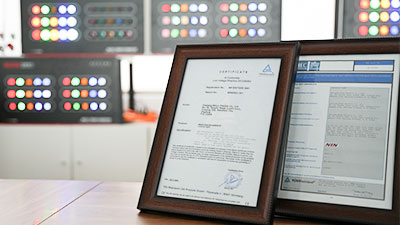The voltmeter is a large resistor, ideally considered to be an open circuit. A voltmeter (parallel with other electrical appliances) and electrical appliances are connected in parallel in the parallel circuit. If there are no other electrical appliances in the main circuit, it can be considered to measure the power supply voltage (because the electrical appliances on the parallel circuit all enjoy the voltage of the power supply) ); If there are other electrical appliances connected to the main road, then this electrical appliance shares part of the power supply voltage, and the voltmeter can only measure part of the voltage (which electrical appliance is connected to is the voltage of which electrical appliance).
It should be known that in the voltmeter, there is a magnet and a wire coil. After passing the current, the coil will generate a magnetic field, so that the coil will rotate under the action of the magnet after it is energized. This is the head part of the ammeter and voltmeter.
The current that this meter can pass through is very small, and the voltage that both ends can bear is also very small (definitely much less than 1V, maybe only a few tenths of a volt or even less). In order to be able to measure the voltage in the actual circuit, you need to This voltmeter is connected in series with a relatively large resistor to form a voltmeter. In this way, even if a relatively large voltage is applied to both ends, most of the voltage is applied to the large resistance, and the voltage on the meter head will be very small. A voltmeter is an instrument with a large internal resistance, which should generally be greater than several kiloohms. The meter head is made according to the force of the energized conductor in the magnetic field. There is a permanent magnet inside the watch, which generates a magnetic field between the poles. There is a coil in the magnetic field. There is a hairspring spring at each end of the coil. The springs are connected to a terminal of the watch. The spring and the coil are connected by a rotating shaft, and the rotating shaft is opposite. At the front end of the ammeter, there is a pointer. When a current flows, the current passes through the magnetic field along the spring and the rotating shaft, and the current cuts the magnetic induction line. Therefore, the magnetic field force causes the coil to deflect, driving the rotating shaft and pointer to deflect. Since the magnitude of the magnetic field force increases with the increase of the current, the magnitude of the current can be observed by the degree of deflection of the pointer.





 Dec 21, 2022
Dec 21, 2022



